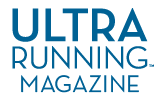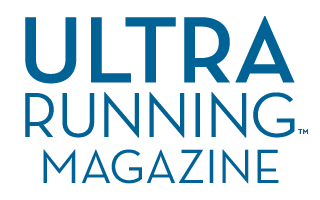When asked if he preferred breathing through his mouth or his nose when running, elite athlete and Badwater finisher Bart Yasso unabashedly responded that he breathes through his mouth, nose, ears, eyes, skin and hair—basically, any way he can get air into his body. On the other end of the spectrum are the nasal breathers—those who claim that breathing exclusively through the nose can boost performance, fitness and health. Which is better? I decided to take a deep breath and look into the matter.
As torturous as running at full speed while breathing only through the nose is, the results have been pronounced.
A book titled Breath: The New Science of a Lost Art by James Nestor sucked me right in. Much the same way the book Born to Run examined how running barefoot (or at least in minimalist footwear) could be beneficial, Nestor explores how we humans have lost the ability to breathe properly and the deleterious effects it has had on everything from our athletic performance to our ability to fight disease. The book was a pivotal moment in the nasal breathing movement, garnering legions of supporters, along with a fair number of detractors. Controversy is the hallmark of many breakthroughs, I’ve learned.
Bestselling author, researcher and human performance specialist Brian Mackenzie belongs to the former group. He’s a believer. Mackenzie is a leading voice on breathing as it relates to athletics, stress and wellbeing. He offers a number of breath development programs and courses and has counseled thousands of athletes on how to optimize breathing. When asked about the benefits of nasal breathing with regards to athletic performance, Mackenzie offers a simple case in point, “Ever watched Kipchoge run?” I hadn’t paid close attention, but when I did, I noticed he breathes mostly through his nose. If a man who runs a sub-2-hour marathon breathes predominately through his nose, there must be something to it. Mackenzie hooked me with that single reference.
Still, skeptics remain. Their main argument is that it doesn’t matter whether you’re breathing through the nose or the mouth, both accomplish the same goal of getting oxygen in and carbon dioxide out. Kipchoge is no exception.
Mackenzie counters that it’s not so simple. There’s more going on with nasal breathing than merely gas exchange, such as glycogen sparing, greater nitric oxide production, better development of the diaphragm and intercostal muscles and an expansion of the ribcage, to name but a few physiological adaptations. Nasal breathing is superior, in other words.
So, who’s right? To help answer that question I’ll share my own personal experience with nasal breathing. As torturous as running at full speed while breathing only through the nose is, the results have been pronounced. Using VO2 max as a measurement, I’ve seen double-digit gains (and VO2 max is notoriously difficult to increase). Granted, I’m using a GPS watch for the measurements—which isn’t the most sophisticated instrument for assessing VO2 max—but I’ve used this same watch throughout my training, so at least the measurement device has been consistent (and I’m not claiming this to be any sort of scientific study, it’s just one guy’s observation).
In the interest of further transparency, I’ll also add that perhaps I am pushing myself harder than I’ve pushed before. Nasal breathing while running at 5k race pace is brutal, and the airflow resistance induced by inhaling and exhaling entirely through your nose is suffocating, so perhaps the gains have been on account of simply pushing myself harder than in the past.
But I’m not convinced that’s the whole story. I get the sense there’s more to it, as if a completely new system is being activated (or at least an existing bodily system is being more robustly stimulated). I imagine Mr. Mackenzie could hook me up to his fancy machines and point out exactly what’s going on. And I also imagine the critics could analyze the data and poke holes in it. But for my part, at least, I seem to have broken through a fitness glass ceiling. Through changing the way I breathe, I’ve elevated a physiological measurement of cardiovascular fitness and aerobic endurance in a meaningful way.
Though I do want to be clear, while nasal breathing has been a valuable training technique, I’m not claiming it to be any sort of panacea. It took six months of hard work to notice any appreciable gains and when I race, I’m more like Bart Yasso than Eliud Kipchoge—I suck in air anyway I can get it.
I’ll conclude with some practical advice. If you’re tempted to try nasal breathing while running, bring a handkerchief. Creatures emerge, viscous and gooey beasts from the underworld. Best not to pelt an unsuspecting passerby with a hurling snot rocket, so keep it civilized and carry a hankie.
Other than that, seal those lips and have at it. You might not be able to match Kipchoge, but at least you’ll be able to launch some rockets in his honor.



